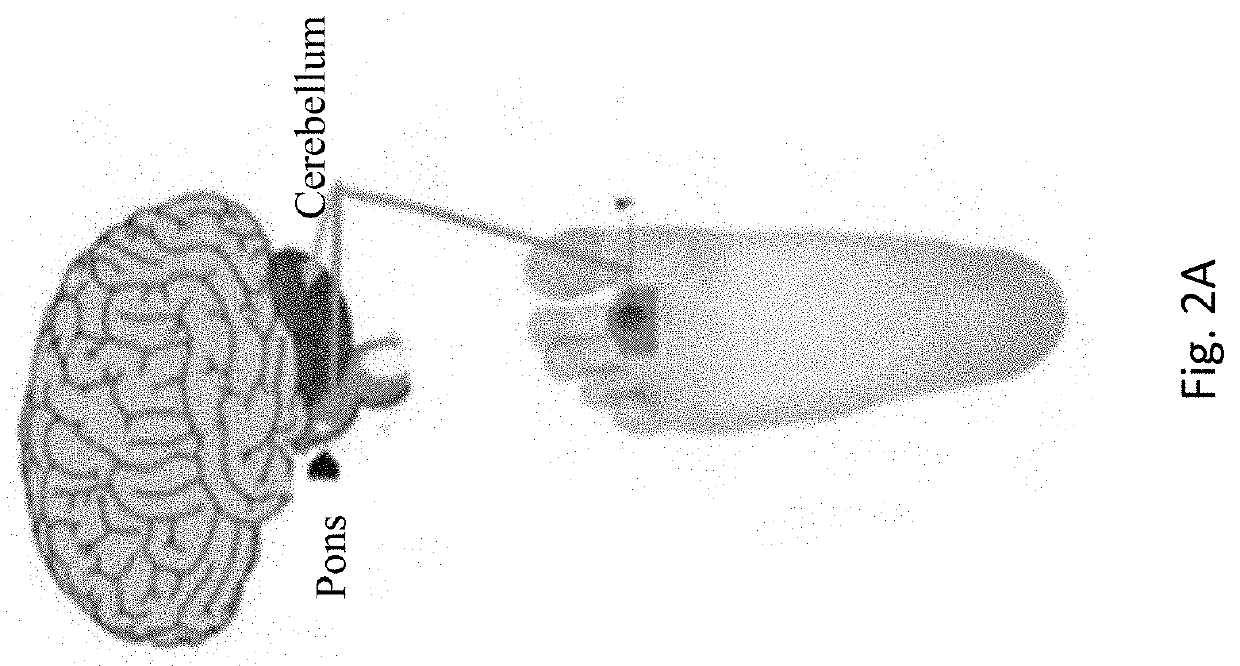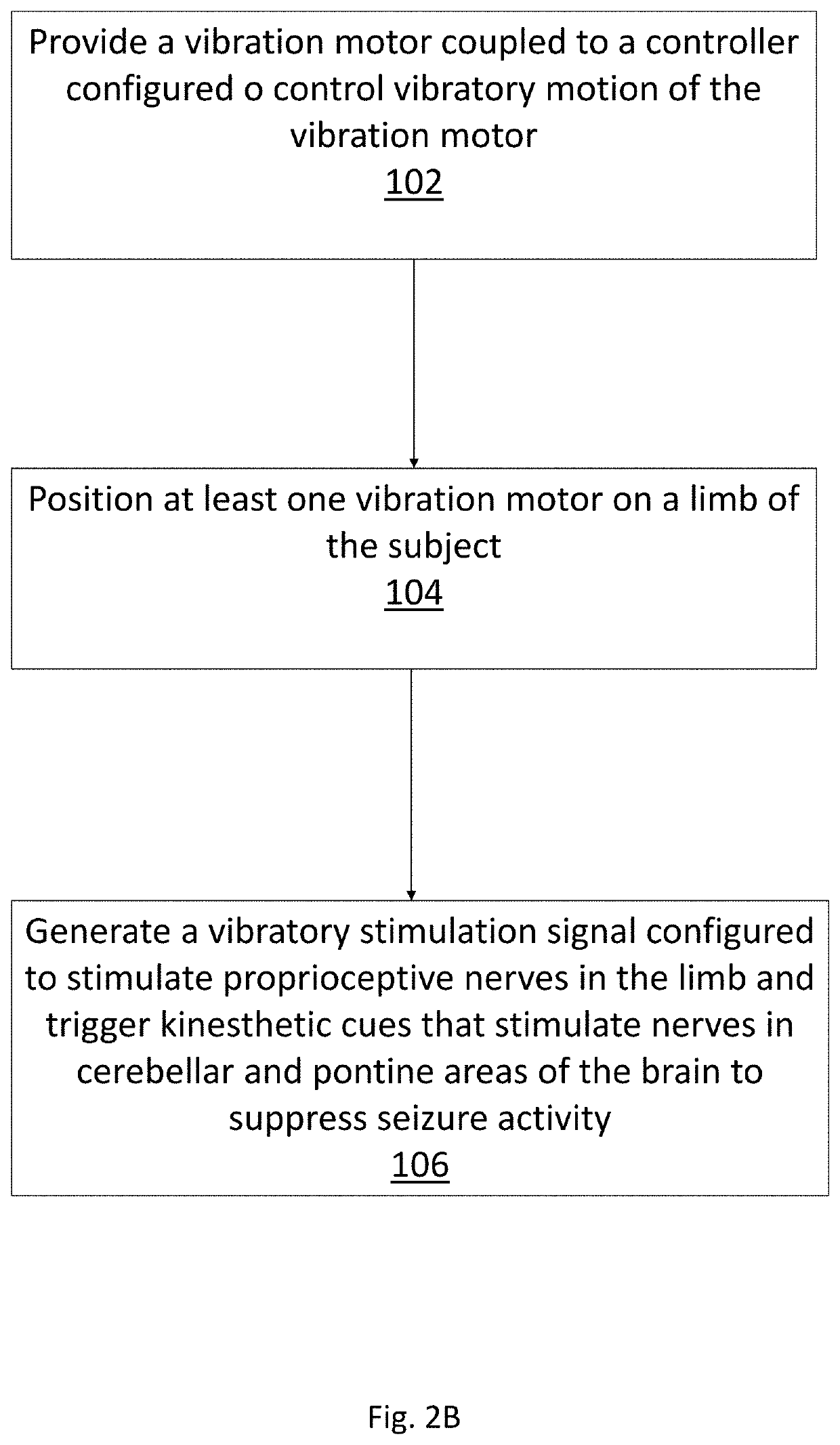Non-invasive proprioceptive stimulation for treating epilepsy
a proprioceptive stimulation and epilepsy technology, applied in the field of non-invasive proprioceptive stimulation for treating epilepsy, can solve the problems of inability to tolerate drugs, ineffective pharmacologic agents in reducing seizures, and often introducing negative side effects of stimulation, so as to suppress seizures and reduce epileptic seizures
- Summary
- Abstract
- Description
- Claims
- Application Information
AI Technical Summary
Benefits of technology
Problems solved by technology
Method used
Image
Examples
experimental examples
[0140]The invention is now described with reference to the following Examples. These Examples are provided for the purpose of illustration only and the invention should in no way be construed as being limited to these Examples, but rather should be construed to encompass any and all variations which become evident as a result of the teaching provided herein.
[0141]Without further description, it is believed that one of ordinary skill in the art can, using the preceding description and the following illustrative examples, make and utilize the present invention and practice the claimed methods. The following working examples therefore, specifically point out exemplary embodiments of the present invention, and are not to be construed as limiting in any way the remainder of the disclosure.
example 1
[0142]Data from five patients with severe drug-resistant epilepsy, and who are at very high risk for SUDEP are described after device use. An initial patient, a 23-yr old male with tuberous sclerosis and seizure onset at birth, and a SUDEP score of 7 (highest risk) expressed 3 seizure types, generalized tonic-clonic seizures, partial seizures with stare, and 4 drop attacks in a 27 day baseline (no stimulation) period. As with all patients, he underwent a month-long period of all-night vibratory stimulation with the vibratory device attached to the sole of the right foot at the head of the second metatarsal. Seizure events were recorded on a seizure log and compared with a log for the previous baseline period. Drop attacks (in which the subject loses all muscle tone and drops to the floor) were reduced from 0.15 / day to 0 (4 in 27 day period vs 0), complex partial seizures from 1.81 / day to 0.95 / day, and GTCs declined from a baseline 4 / day to 0 (FIG. 46). The number of seizure-free day...
example 2
[0189]There is evidence that peripheral sensory stimuli suppress epileptic discharges and seizures in animals and humans (1-6). Such peripheral stimulation activates proprioceptive and sensory pathways which project to cerebellar and thalamic structures. Direct electrical, optogenetic, and transcranial magnetic stimulation of the cerebellum has been explored as a means to reduce seizures since the pioneering studies of Cooper and others in the 1970's (7-13). More generalized non-invasive procedures, including hypothermia, transcranial and direct current stimulation of other brain areas, and electrical stimulation of cutaneous surfaces served by trigeminal and vagal nerves have been introduced as well (14-19). Cerebellar regulatory processes are central to protection and recovery from prolonged apnea and extreme hypotension (20, 21), conditions central to Sudden Unexpected Death in Epilepsy (SUDEP) (22, 23). The frequency of generalized tonic-clonic seizures is also a principal risk ...
PUM
 Login to View More
Login to View More Abstract
Description
Claims
Application Information
 Login to View More
Login to View More - R&D
- Intellectual Property
- Life Sciences
- Materials
- Tech Scout
- Unparalleled Data Quality
- Higher Quality Content
- 60% Fewer Hallucinations
Browse by: Latest US Patents, China's latest patents, Technical Efficacy Thesaurus, Application Domain, Technology Topic, Popular Technical Reports.
© 2025 PatSnap. All rights reserved.Legal|Privacy policy|Modern Slavery Act Transparency Statement|Sitemap|About US| Contact US: help@patsnap.com



